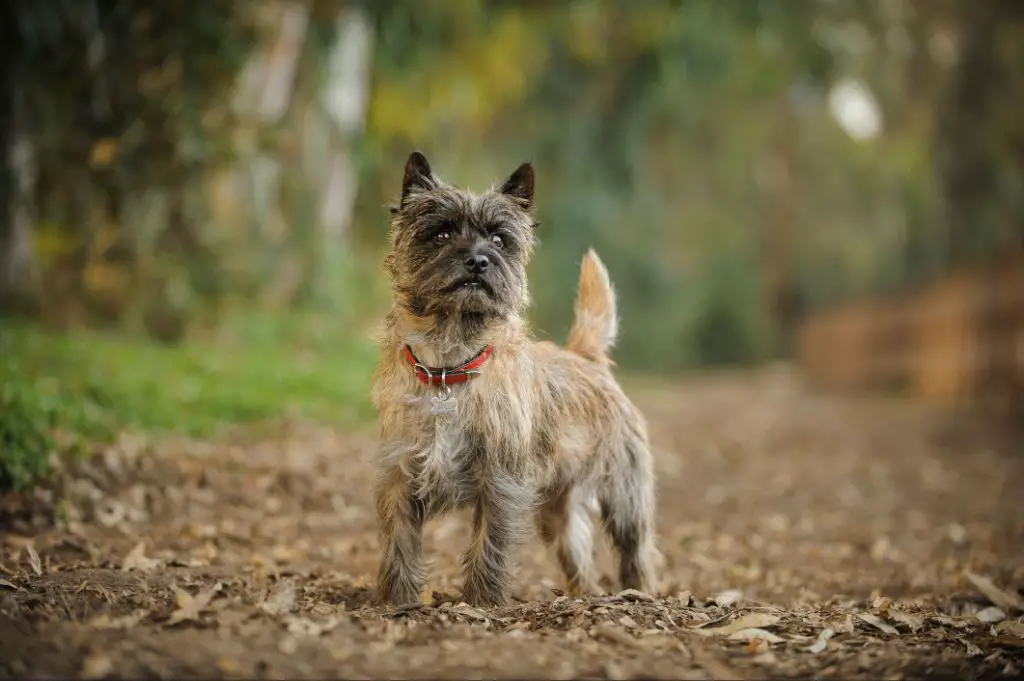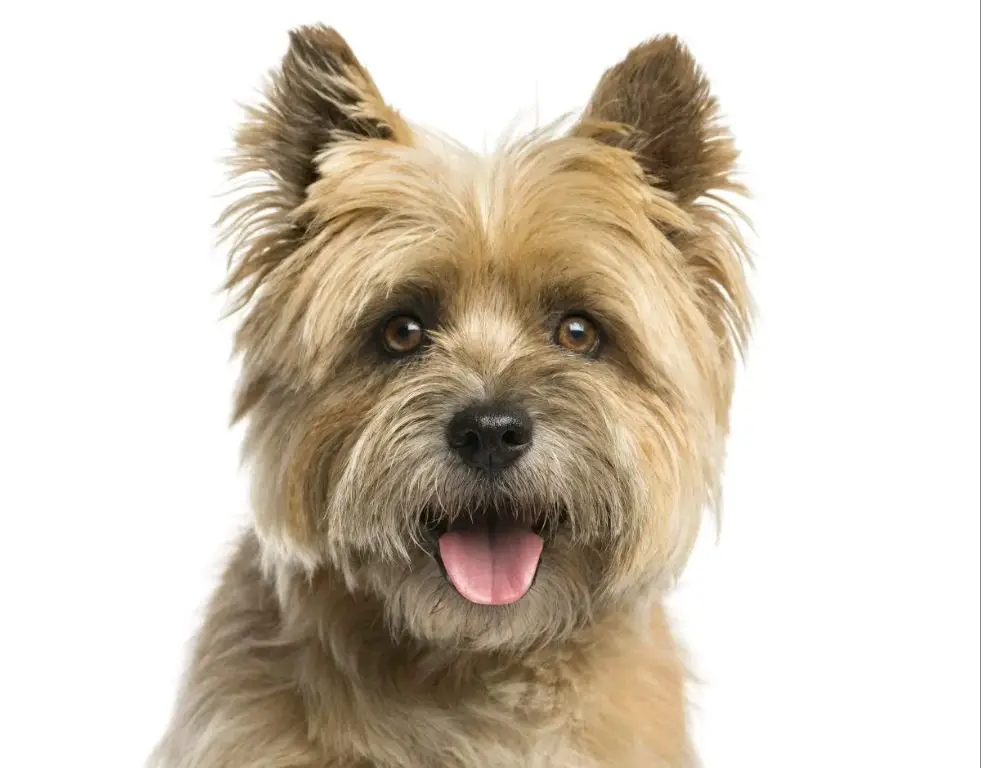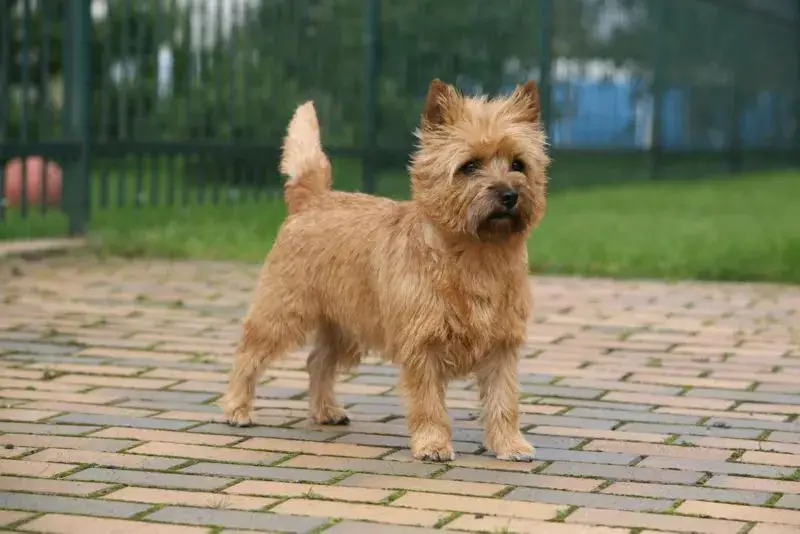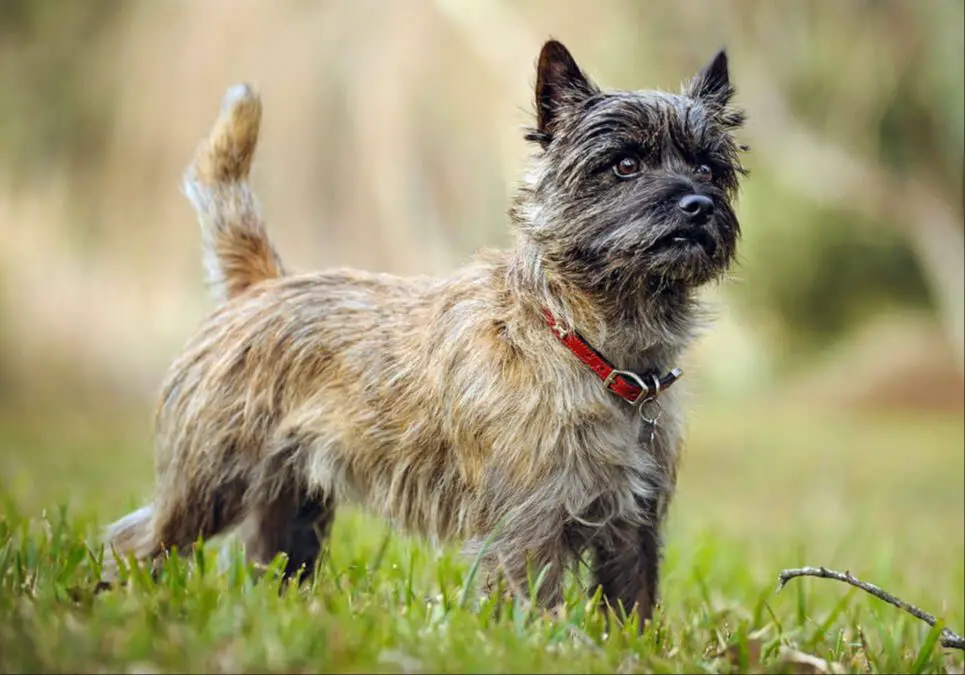Introduction
The term “hypoallergenic dog” refers to breeds that are likely to cause fewer allergic reactions in people prone to dog allergies. While no dog is 100% hypoallergenic, certain breeds shed less hair and dander, producing lower levels of allergens. The Cairn Terrier is one such breed that is sometimes marketed as hypoallergenic.
The Cairn Terrier originated in the Scottish Highlands and was bred to hunt small prey like rodents. They are energetic, intelligent dogs weighing 13-14 lbs and standing around 10 inches tall. With a weather-resistant coat and cheerful, alert temperament, the Cairn Terrier became popular as a family pet. Their shaggy outer coat sheds minimally, leading some to believe they may be suitable for allergy sufferers.
Cairn Terrier Breed History
The Cairn Terrier originated in the Scottish Highlands and Isle of Skye in the 16th century. According to Wikipedia, it was one of the earliest working terrier breeds in Scotland [1]. The breed’s purpose was to hunt and kill vermin on farms and homesteads. Their name comes from the piles of stones called “cairns” that they would dig through to pursue prey.

Cairn Terriers have a weather resistant, short double coat that comes in any color except white. According to the Cairn Terrier Club of America, the outer coat is harsh and the undercoat is soft and dense [2]. Their double coat and short stature allowed them to maneuver easily through rocky crevices and burrows as they hunted.
The average Cairn Terrier stands 9-13 inches tall and weighs 13-14 pounds. They have a body longer than they are tall with relatively short legs. Their head is broad with pointed, erect ears. Their eyes are wide-set and expressive. Their bushy tail is carried upright and their coat colors include cream, red, sand, gray, black, silver or brindled.
What Makes a Dog Hypoallergenic?
Most people are allergic to the dander and saliva of dogs rather than their fur. Dander is dead skin that flakes off the dog’s body. When dogs groom themselves, the dander from their skin and saliva from their mouths get stuck in their fur. This dander and saliva contain the proteins that trigger allergic reactions in people.
Breeds considered hypoallergenic tend to have coats that don’t trap as much dander and saliva. These breeds typically have one of three coat types:
- Hair coats – Each hair strand grows from a single follicle. Shed hairs don’t get trapped in the coat but fall to the floor. Examples: Poodles, Portuguese Water Dog.
- Furnishings – Longer hair on the face, ears, tail, and legs but shorter over the body. Doesn’t trap much dander or saliva. Example: Bichon Frise.
- Wool coats – Tight, dense, curly coats that resemble wool. Shed little and don’t trap many allergens. Example: Breeds like Poodles and Irish Water Spaniels.

While no dog is 100% hypoallergenic, breeds with these coats tend to release less dander and saliva into the environment, helping reduce allergic reactions in sensitive individuals.
Sources:
https://vcahospitals.com/know-your-pet/hypoallergenic-dog-breeds-is-there-such-a-thing
https://www.onlynaturalpet.com/blogs/holistic-healthcare-library/the-ultimate-guide-to-hypoallergenic-dogs
Cairn Terrier Shedding
Cairn Terriers shed a moderate amount, especially compared to heavy shedding breeds. While they do not shed as prolifically as some dogs, Cairn Terriers are not considered a non-shedding breed either (1). Their wiry double coats consist of a rough outer coat and a soft undercoat. When the undercoat sheds, loose hair can get trapped in the wiry outer layer, meaning regular grooming is important.
Cairn Terriers shed moderately year-round and more heavily as seasons change. During shedding seasons in spring and fall, they blow their coats and need extra brushing to remove dead hair (2). Daily brushing helps remove shed hair and prevents mats from forming. Hand stripping or clipping their coat a few times a year also helps remove dead hairs.
Overall, Cairn Terriers have manageable shedding with regular grooming. Their wiry coats also mean less dander and hair scattering around the home compared to soft-coated breeds. While no dog is truly non-shedding, Cairn Terriers shed less than many other dogs.
Sources:
(1) https://www.cairnterrierclub.ca/find-a-cairn-terrier/7-reasons-not-to-get-a-cairn-terrier/
(2) https://stopmydogshedding.com/cairn-terrier-shedding
Cairn Terrier Dander and Saliva

Cairn Terriers produce less dander than many other dog breeds, which is good news for allergy sufferers. According to Hypoallergenic Dog, Cairn Terriers have low dander levels compared to heavier shedding dogs like Labradors, German Shepherds, and Golden Retrievers. The AKC also notes that Cairn Terriers have a wiry outer coat that doesn’t shed much. This means less dander and allergens released into the environment.
While no dog is completely non-allergenic, Cairn Terriers tend to release less saliva when they lick and play. Their saliva contains proteins that can trigger allergic reactions in sensitive individuals. Having a dog that doesn’t excessively lick or drool can help minimize allergy triggers.
To manage allergies around Cairn Terriers, experts recommend bathing your dog regularly using a hypoallergenic shampoo to reduce dander. Brushing your dog frequently also helps remove loose hair and dander. Vacuuming regularly and using air purifiers can also help capture allergens. While Cairn Terriers shed minimally, being diligent about cleaning can further reduce allergen levels.
Experiences of Allergy Sufferers
Many people wonder if the Cairn Terrier will aggravate their allergies. While no dog is 100% non-allergenic, most allergy sufferers find the Cairn Terrier to be easier to live with than some other breeds.
For example, one allergy sufferer on a Cairn Terrier forum shared: “I grew up with a Cairn Terrier and had no issues. Now as an adult I’ve developed some allergies, mostly to cats and horses. But I got a Cairn puppy and have had no allergy problems around him.”
Other forum members echoed this sentiment, with many noting that the Cairn sheds only seasonally, does not drool much, and has hair rather than fur. This seems to make the breed less irritating for allergy sufferers compared to retrievers, collies, huskies, and other heavy shedding breeds.

Of course, individual experiences vary. Some find that no amount of vacuuming, bathing or allergy medications allows them to live comfortably with a Cairn. But many allergy sufferers report greatly reduced symptoms with this breed compared to others.
Best Dogs for Allergies
There are a number of hypoallergenic dog breeds that tend to be better tolerated by people with allergies. According to the AKC, some of the top recommended hypoallergenic breeds include:
Poodles – Poodles have a tightly curled coat that does not shed much. Their coat also produces less dander and saliva. https://www.akc.org/expert-advice/dog-breeds/hypoallergenic-dog-breeds/
Maltese – This toy breed has a long, silky coat that sheds very little. Their small size also means they produce less dander.
Shih Tzu – Its long, flowing coat resembles human hair more than fur, so these dogs shed very little and produce less dander.
Yorkshire Terriers – The Yorkie’s fine, glossy coat sheds very little. Their small size also means less overall dander produced.
Bichon Frise – This fluffy white breed has a dense, curly coat that traps dander and sheds very little. They produce less dander overall.
While not completely non-shedding or hypoallergenic, Cairn Terriers tend to shed less than some breeds due to their wiry coats. Their medium-small size means they produce less dander than larger breeds. However, they are not usually considered one of the best choices for severe allergy sufferers compared to the poodle or Maltese.
Tips for Managing Allergies
There are several things you can do to help manage allergies if you have a dog:
- Bathe your dog at least once a week using a veterinarian-recommended hypoallergenic shampoo. Frequent bathing can reduce dander and allergens in their fur. Be sure to thoroughly rinse and dry their coat afterwards.[1]
- Brush or comb your dog daily outside of your home, as this can reduce the amount of loose hair and dander in your house. [2]
- Vacuum carpets, upholstery, and pet beds frequently using a vacuum with a HEPA filter to remove allergens. [3]
- Wash your dog’s bedding weekly in hot water to kill dust mites. [4]
- Consider keeping your dog outdoors or restricting them to non-carpeted areas of your home.[5]
- Ask your vet about antihistamines or other allergy medications that may help reduce your symptoms. Some common options are Claritin, Zyrtec, Benadryl or prescription medications.
- Get allergy shots or sublingual immunotherapy designed to desensitize you to specific allergens.
With proper grooming, cleaning routines, and medications, you can manage pet allergies without having to give up your furry friend.
[1] https://www.humanesociety.org/resources/how-live-allergies-and-pets
[2] https://acaai.org/allergies/allergic-conditions/pet-allergies/
[3] https://vet.osu.edu/sites/vet.osu.edu/files/legacy/documents/pdf/education/mph-vph/allergic%20to%20your%20dog.pdf
[4] https://www.humanesociety.org/resources/how-live-allergies-and-pets
[5] https://acaai.org/allergies/allergic-conditions/pet-allergies/
Making Your Home Allergy-Friendly
If you want to live comfortably with dogs despite having allergies, it’s crucial to make your home as allergy-friendly as possible. There are several effective strategies you can implement.
Investing in an air purifier with a HEPA filter can significantly reduce airborne pet dander in your home (source). HEPA filters are designed to capture tiny particles like pet dander that can aggravate allergies. Place air purifiers in rooms where you spend the most time, like the bedroom and living room.
Frequently washing bedding and soft furnishings in hot water also helps minimize dander levels. Aim to wash your bedding weekly if you sleep with a dog in your bedroom (source).
Designating a no-pet zone in your home gives people with allergies a refuge free of allergens. Keep dogs out of bedrooms as much as possible and avoid allowing them on upholstered furniture where dander can collect (source).
Conclusion
In summary, while no dog is 100% hypoallergenic, Cairn Terriers tend to shed less and produce less dander than many other breeds, making them easier to tolerate for some allergy sufferers. Their wiry coat, infrequent shedding, and low-allergen saliva can help reduce allergy triggers. However, reactions vary by individual, and those with severe allergies may still react to Cairn Terriers. Using allergy medication, keeping your home clean, grooming and bathing your dog frequently, and preventing access to bedrooms can help mitigate allergies. While not completely non-allergenic, Cairn Terriers can be a good choice for allergy sufferers looking for a small, lively companion dog. Their properties make them more likely to be tolerated than many other breeds. However, it’s still important to spend time around Cairn Terriers before committing to one to see if you react.
